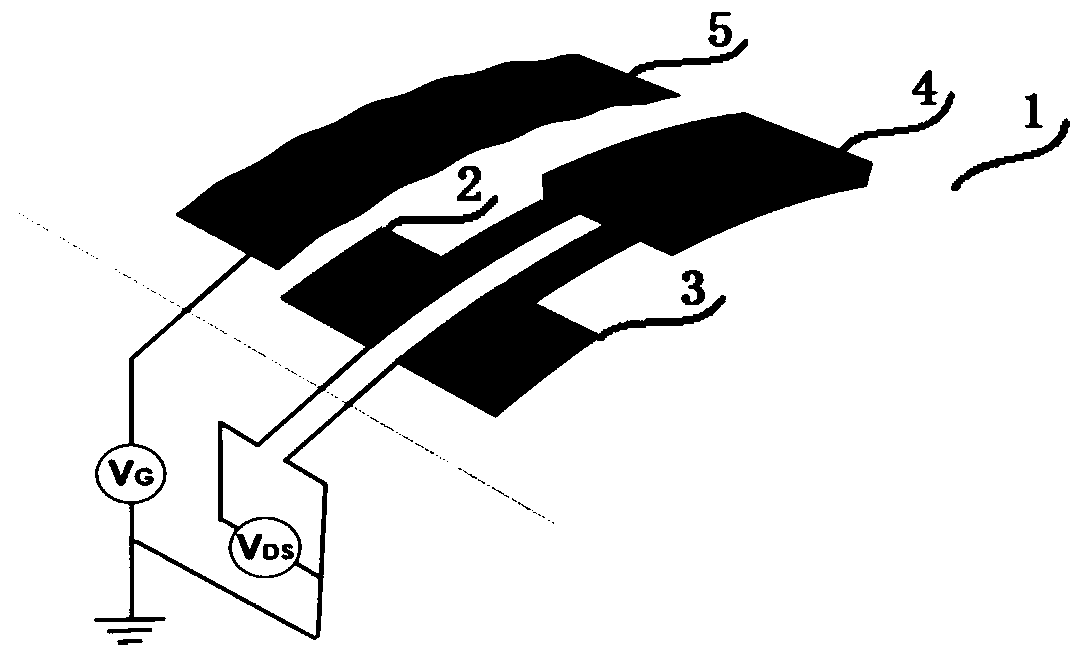Non-invasive flexible sensor for detecting dopamine
A flexible sensor, non-invasive technology, applied in the field of biochemical sensing, can solve the problem of high cost of precious metals, and achieve the effect of reducing power consumption and cost of devices
- Summary
- Abstract
- Description
- Claims
- Application Information
AI Technical Summary
Problems solved by technology
Method used
Image
Examples
Embodiment Construction
[0050] The following describes several preferred embodiments of the present invention with reference to the accompanying drawings, so as to make the technical content clearer and easier to understand. The present invention can be embodied in many different forms of embodiments, and the protection scope of the present invention is not limited to the embodiments mentioned herein.
[0051] In a first aspect of the present invention there is provided a non-invasive sensor for detecting the amount of dopamine in a bodily fluid, said sensor comprising:
[0052] Organic electrochemical transistors (OECTs) with gate electrodes based on carbon materials;
[0053] Wherein, the base surface of the gate electrode is modified with nanometer materials to increase the sensitivity of the gate electrode.
[0054] Wherein, the base surface of the gate electrode is modified with a polymer to increase the selectivity of the gate electrode.
[0055] The base of the gate electrode may be carbon s...
PUM
 Login to View More
Login to View More Abstract
Description
Claims
Application Information
 Login to View More
Login to View More - R&D
- Intellectual Property
- Life Sciences
- Materials
- Tech Scout
- Unparalleled Data Quality
- Higher Quality Content
- 60% Fewer Hallucinations
Browse by: Latest US Patents, China's latest patents, Technical Efficacy Thesaurus, Application Domain, Technology Topic, Popular Technical Reports.
© 2025 PatSnap. All rights reserved.Legal|Privacy policy|Modern Slavery Act Transparency Statement|Sitemap|About US| Contact US: help@patsnap.com



